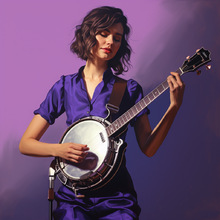Banjo tablatures for Soldier's Joy
Traditional
Recomended level: Intermediate
Soldier's Joy is a cheerful, medium-tempo old-time fiddle tune popularly played on the banjo. Perfect for Intermediate level players, this is a great song to bring a positive and upbeat feeling to your playing.
-

Scruggs Style
- Difficulty
- Key D
- Tempo 120 bpm
- Tuning aDGBD
A break based loosely on Earl Scruggs's version. There's some tricky syncopation in the B section, so practice slowly to get the timing right.
Learn
-

Melodic Style
- Difficulty
- Key C
- Tempo 115 bpm
- Tuning gDGBD
This one works great in C shape for the melodic style. At a jam this song is played in D, however you don't have to use the capo to learn or practice this tune. You've just gotta enj...
Learn
-

Melodic Style - 2
- Difficulty
- Key D
- Tempo 115 bpm
- Tuning aDGBD
This one has some challenge. We are playing this in 5th position, and using the D Major scale in the melodic style. Check out the D Melodic Scale workout before taking on this tune.
Learn
-

Single String
- Difficulty
- Key D
- Tempo 120 bpm
- Tuning aDGBD
This is note for note how a fiddle player may play Soldier's Joy. Find a friend that plays fiddle and teach it to them!
Learn
-
